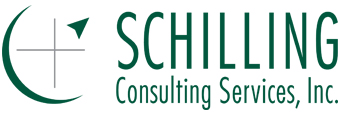“Getting There” through Plan Reviews
Fall is a popular time for Strategic Planning. As the calendar year (and in some cases, the fiscal year) draw to a close, it can be a good time to assess progress, examine position, and determine priorities for the coming year. No wonder, then, that most of the focus is on developing, or updating, the Plan content...the goals, measures, and tactics. But don’t overlook the Plan review process. It may be time for a few changes there as well. How often do you review your Plan? Who is involved? What is the “climate” of the reviews? What is the result of these reviews? How are your Plan reviews contributing to achieving your Vision and Goals?
More than “Review” Plan reviews serve two critical purposes. First, by helping us gauge progress toward the Vision / Goals, they are a principle means of accountability. Second, reviews enable adjustments. More specifically, they help us detect when changes are needed in Tactics. Such changes may be needed due to...
...irrelevance, stemming from changes in the industry or marketplace,
...impracticality, when implementation is proving to be much more difficult or costly than originally thought, or
...ineffectiveness of one or more Tactics that are insufficient to achieve the results needed.
Smooth Sailing Any of these things can and will happen, even with the best Strategic Plans. This is because a Strategic Plan is the product of a set of insights, assumptions, and strategies made at a point in time. However, everything continues to change, including your market, your industry, and your organization. As a result, you will need to routinely assess if you are achieving your Vision / Goals (the accountability), and make adjustments throughout the life of the Plan. An often used analogy is that Strategic Planning is like sailing a boat. You have a destination port (Vision, Goals), and you set a course (tactics) based on current conditions (industry, market and organizational assessments). However, changes occur. The wind changes direction and speed, the current shifts, and as a result, you need to make course corrections (modifications to your tactics).
From Plan to Planning Because of the two critical purposes they serve, reviews bring two seemingly contradictory benefits to planning, discipline and flexibility. Both are invaluable in reaching your destination. So, remember to spend some of your Strategic Planning time assessing your Plan review process.
If you want help or just a fresh perspective, contact me at your convenience.

